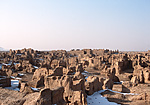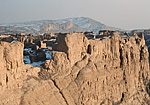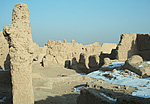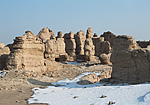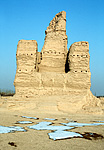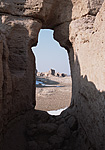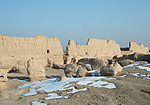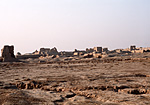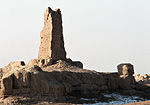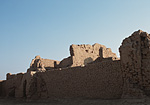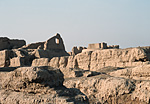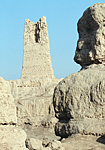Jiāohé Gùchéng

Jiāohé, around 7km west of Turpan, was established by the Chinese during the Han dynasty as a garrison town to defend the western extent of the empire. The two rivers which bound the island on which Jiāohé sits did not provide sufficient protection from Genghis Khan however, who overran and completely devastated the garrison as he was working his way through Central Asia.
Whilst there isn't a lot left, the buildings are still very obvious and you can stroll along the city's streets and main roads which are much more visible than the more important ruins at nearby Gāochāng.
Gāochāng Gùchéng
Gāochāng, around 46lm east of Turpan, was founded in the 7th century during the Tang dynasty and became the capital of the Uyghurs when they moved into the Xīnjiāng region during the 9th century from Mongolia. The city was a major staging post on the Silk Road and as such grew to into a major centre with government offices, a palace, an inner city within 12m thick walls and an outer city beyond the walls.
Today the city walls are the most clearly visible feature along with the remains of a large monastery in the south-western part of the city near the wall.
When visiting Gāochāng Gùchéng, you can visit the city cemetry and the Āsītănà Gŭmùqū (Asitana Graves) that are to the north-west. These tombs, 6m below ground, contain various paintings on the walls and one of the three tombs contains two well-preserved mummies.
Return to the Xinjiang Gallery.
For other regions within China see, China Travel Gallery.
